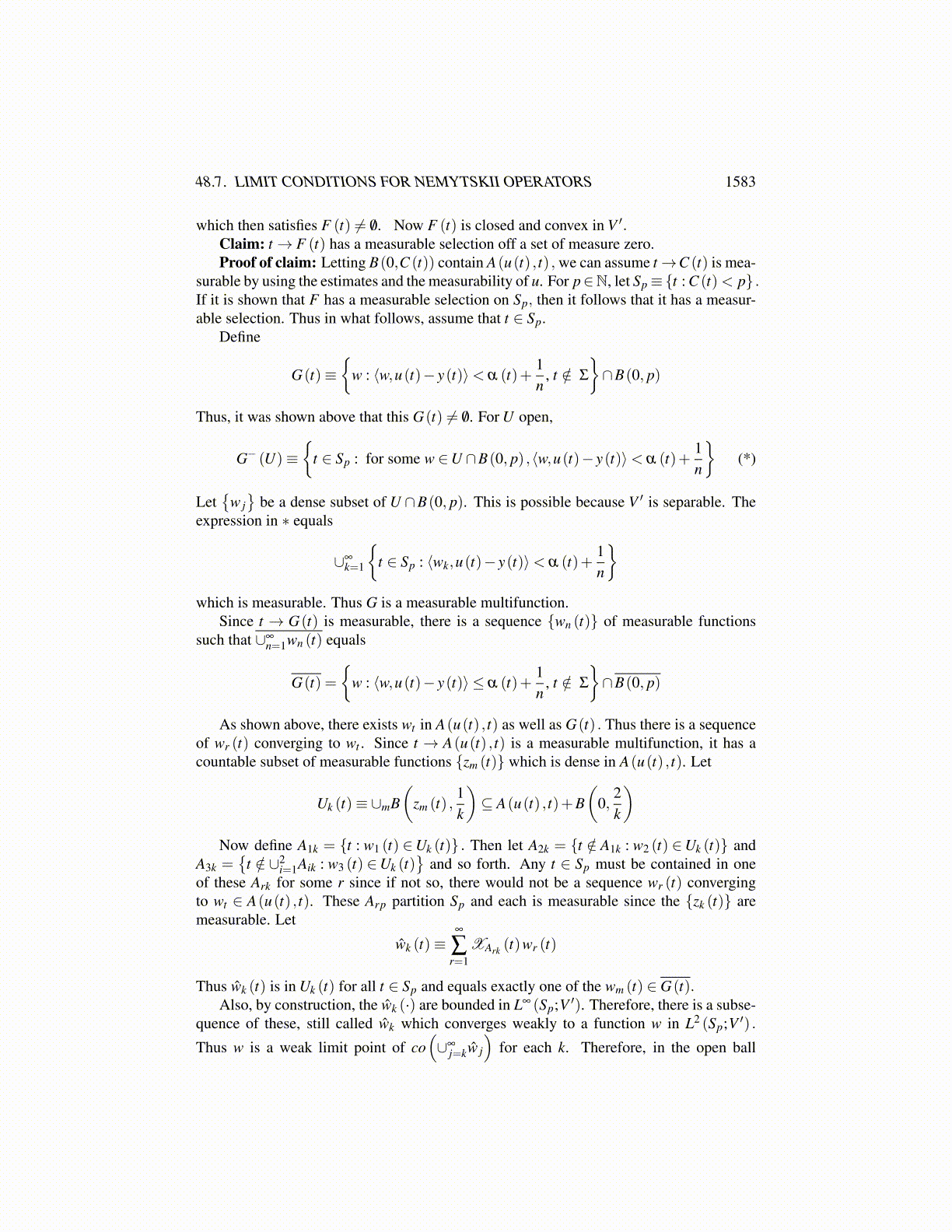
48.7. LIMIT CONDITIONS FOR NEMYTSKII OPERATORS 1583
the last term being bounded independent of t,n by assumption. Thus there exists c ∈L1 (0,T ) and a positive constant C such that
⟨zn (t) ,un (t)− y(t)⟩ ≥ −c(t)−C ||y(t)||pV . (48.7.26)
Letting y = u, we use Fatou’s lemma to write
lim infn→∞
∫ T
0
(⟨zn (t) ,un (t)−u(t)⟩+ c(t)+C ||u(t)||pV
)dt ≥
∫ T
0lim inf
n→∞⟨zn (t) ,un (t)−u(t)⟩+
(c(t)+C ||u(t)||pV
)dt
≥∫ T
0
(c(t)+C ||u(t)||pV
)dt.
Here, we added the term c(t)+C ||u(t)||pV to make the integrand nonnegative in order toapply Fatou’s lemma. Thus,
lim infn→∞
∫ T
0⟨zn (t) ,un (t)−u(t)⟩dt ≥ 0.
Consequently, using the claim in the last inequality,
0 ≥ lim supn→∞
⟨zn,un−u⟩V ′,V
≥ lim infn→∞
∫ T
0⟨zn (t) ,un (t)−u(t)⟩dt
= lim infn→∞⟨zn,un−u⟩V ′,V
≥∫ T
0lim inf
n→∞⟨zn (t) ,un (t)−u(t)⟩dt ≥ 0,
hence, we find thatlimn→∞⟨zn,un−u⟩V ′,V = 0. (48.7.27)
We need to show that if y is given in V then
lim infn→∞⟨zn,un− y⟩V ′,V ≥ ⟨z(y) ,u− y⟩ V ′,V , z(y) ∈ Âu
Suppose to the contrary that there exists y such that
η = lim infn→∞⟨zn,un− y⟩V ′,V < ⟨z,u− y⟩V ′,V , (48.7.28)
for all z ∈ Âu. Take a subsequence, denoted still with subscript n such that
η = limn→∞⟨zn,un− y⟩V ′,V
Thuslimn→∞⟨zn,un− y⟩V ′,V < ⟨z,u− y⟩V ′,V (48.7.29)